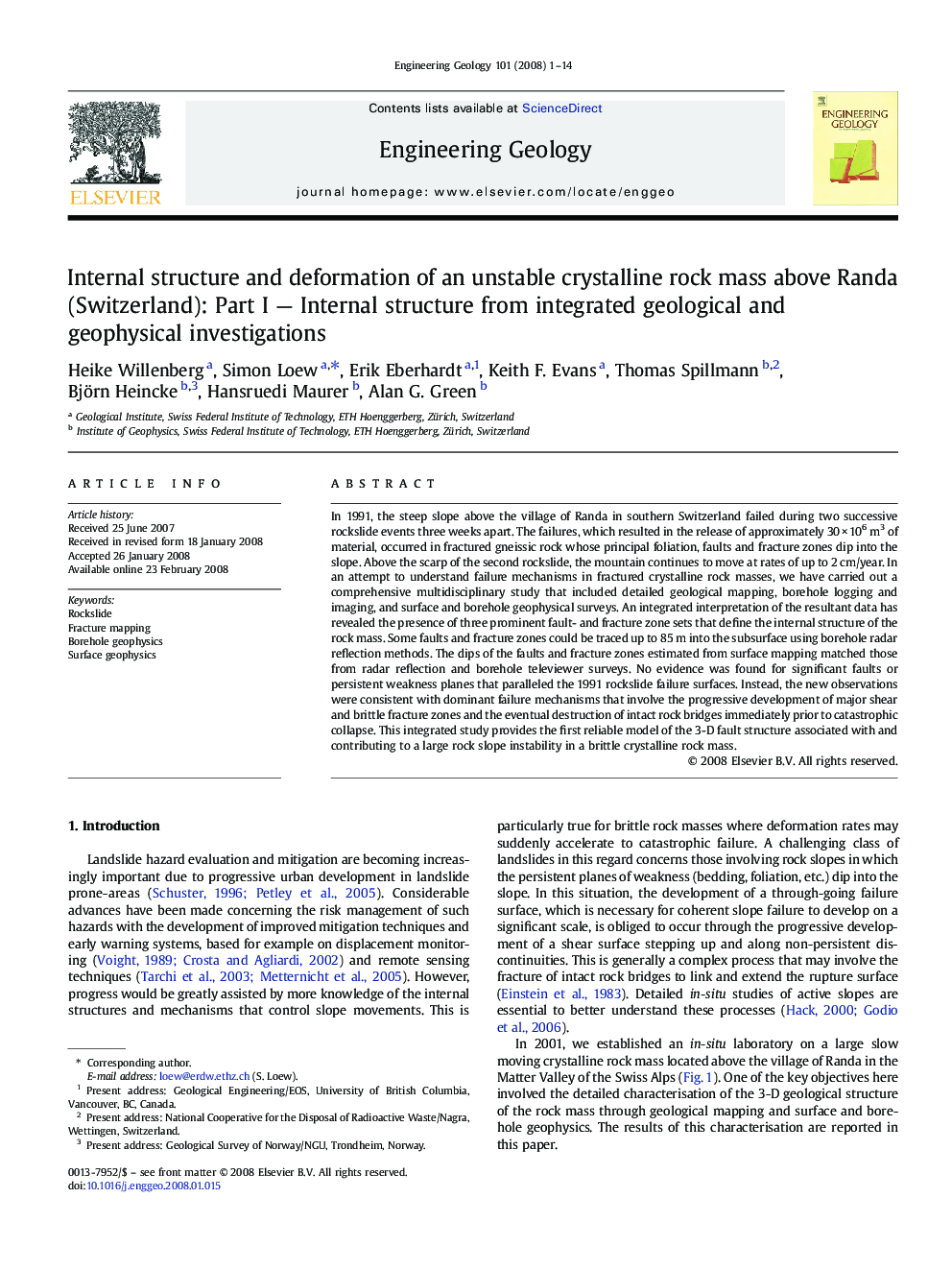| Article ID | Journal | Published Year | Pages | File Type |
|---|---|---|---|---|
| 4744720 | Engineering Geology | 2008 | 14 Pages |
In 1991, the steep slope above the village of Randa in southern Switzerland failed during two successive rockslide events three weeks apart. The failures, which resulted in the release of approximately 30 × 106 m3 of material, occurred in fractured gneissic rock whose principal foliation, faults and fracture zones dip into the slope. Above the scarp of the second rockslide, the mountain continues to move at rates of up to 2 cm/year. In an attempt to understand failure mechanisms in fractured crystalline rock masses, we have carried out a comprehensive multidisciplinary study that included detailed geological mapping, borehole logging and imaging, and surface and borehole geophysical surveys. An integrated interpretation of the resultant data has revealed the presence of three prominent fault- and fracture zone sets that define the internal structure of the rock mass. Some faults and fracture zones could be traced up to 85 m into the subsurface using borehole radar reflection methods. The dips of the faults and fracture zones estimated from surface mapping matched those from radar reflection and borehole televiewer surveys. No evidence was found for significant faults or persistent weakness planes that paralleled the 1991 rockslide failure surfaces. Instead, the new observations were consistent with dominant failure mechanisms that involve the progressive development of major shear and brittle fracture zones and the eventual destruction of intact rock bridges immediately prior to catastrophic collapse. This integrated study provides the first reliable model of the 3-D fault structure associated with and contributing to a large rock slope instability in a brittle crystalline rock mass.
